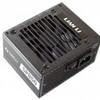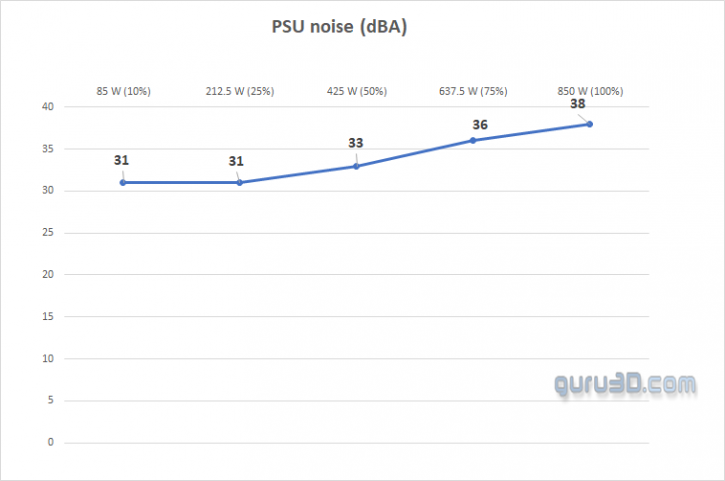Stability Testing the PSU
Stability Testing The PSU
During our tests, we monitor voltage fluctuations at different loads. We write down the lowest and highest values. You want as little fluctuation as possible. The ATX specification requires that the PSU stay within a 5% fluctuation limit. For example, each +12 Volt rail should remain between 11.4 and 12.6 Volts. This means that the PSU is operating within ATX-defined specifications. You can find the thresholds in the table below:
|
Voltage |
Threshold |
Minimum Voltage |
Nominal Voltage |
Maximum Voltage |
|
+3.3 V |
(±) 5% |
+3.14 V |
+3.3 V |
+3.47 V |
|
+5 V |
(±) 5% |
+4.75 V |
+5 V |
+5.25 V |
|
+12 V |
(±) 5% |
+11.4 V |
+12 V |
+12.6 V |
Now, for the measurements for the Lian Li 850W unit:
| DC Output Load Regulation | |||
| Combined DC Load | +3.3 V | +5 V | +12 V |
| 75 W (10%) | 3,34 | 5,07 | 12,08 |
| 187.5 W (25%) | 3,34 | 5,05 | 12,06 |
| 375 W (50%) | 3,33 | 5,04 | 12,05 |
| 562.5 W (75%) | 3,32 | 5,05 | 12,04 |
| 750 W (100%) | 3,30 | 5,03 | 12,01 |
All results remained safely within the specification and tolerance thresholds. As you can see, when in use, the PSU stays consistent. Voltages are stable even at 100% load and close to the ideal values per the ATX specification.
Sound levels (dBA)
We always used the Voltcraft SL-100 dBA meter for sound level measurement. The human auditory system has different sensitivities at different frequencies. This means that the perception of noise is not at all equal at every frequency. Noise with significant measured levels (in dB) at high or low frequencies will not be as annoying as its energy in the middle frequencies. In other words, the measured noise levels in dB will not reflect the actual human perception of the loudness of the noise. That’s why we measure the dBA level. A specific circuit is added to the sound level meter to correct its reading regarding this concept. This reading is the noise level in dBA. The letter A is added to indicate the correction made in the measurement. Frequencies below 1 kHz and above 6 kHz are attenuated, whereas the A-weighting amplifies frequencies between 1 kHz and 6 kHz. We measure the dBA 75 cm away from the product (the usual distance between you and a desktop computer). This is a rather subjective test. The lowest dBA level we can measure in this room without equipment activated is roughly 30 dBA.
- At ~10% (idle) PSU is almost inaudible
- At ~ 25-50%, you can hear the PSU
- At ~ 75% load, you can hear the fan quite clearly if other components are quiet
Below you can find the RPM behavior of the PSU fan:
You need to remember that it’s a 92 mm fan inside. The PSU remains quite noisy even under normal load conditions. The sound can be noticeable even in a system equipped with a CPU cooler, chassis fans, and a GPU.
If it’s under 37-38 dBA, you probably won’t hear it unless you bring your ears very close to the power supply unit. So, the Lian Li PSU should be acceptable for many users, let’s say, 80-85% load.



